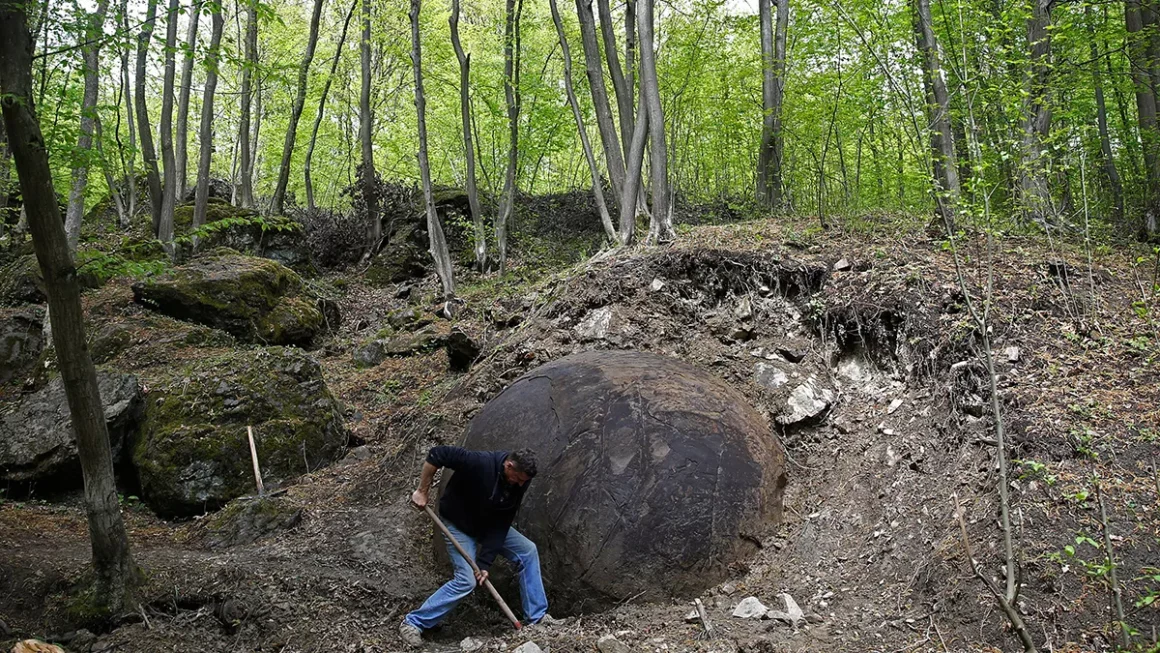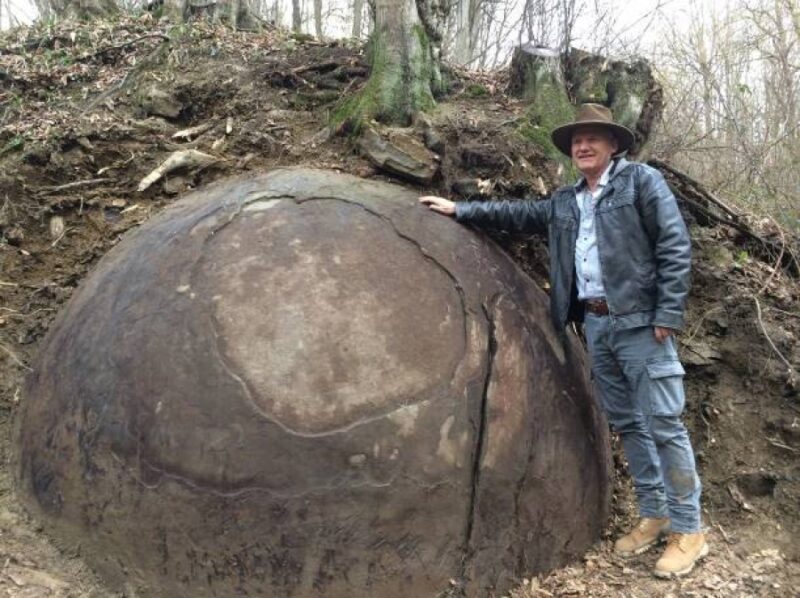In 2016, the archaeological community was abuzz with news of a massive stone sphere discovered near the village of Podubravlje in Bosnia and Herzegovina. This find, initially touted as evidence of an ancient advanced civilization, has since become a subject of intense debate among experts.
The stone ball was brought to light by archaeologist Sam Osmanagich, known for his controversial claims about ancient pyramids in Bosnia. Contrary to some reports crediting local resident Suad Keserovic with the discovery, Keserovic was merely photographed posing with the sphere.
Initial reports about the sphere’s size were exaggerated. While some sources claimed it measured 10 feet in diameter and weighed 35 tons, more accurate measurements put its diameter between 7.8 to 9.8 feet (1.2 to 1.5 meters in radius) and its weight closer to 30 tons. Despite these corrections, the sphere remains an impressive sight.
Osmanagich has suggested that the ball is evidence of a lost civilization that once inhabited the area, possessing advanced technological knowledge. He points to similar spheres found in other parts of the world, such as Costa Rica, as supporting evidence for his theory.

However, many geologists and archaeologists dispute Osmanagich’s claims. They argue that the sphere is likely a natural geological formation known as a concretion. These formations occur when mineral cement fills spaces between sediment grains, creating a compact, often spherical shape over time.
The debate surrounding the Bosnian stone sphere highlights the ongoing tension between sensational archaeological claims and scientific skepticism. While the possibility of ancient, unknown civilizations captivates the public imagination, the scientific community emphasizes the importance of rigorous evidence and peer review.
Similar spherical stones, both natural and man-made, have been found in various parts of the world. In Costa Rica, for example, hundreds of stone spheres crafted by ancient civilizations have been documented. These confirmed artificial spheres provide an interesting contrast to the Bosnian find, illustrating the complexity of distinguishing between natural phenomena and human artifacts.
As research continues, the Bosnian stone sphere remains a subject of fascination and study. Whether it proves to be a remarkable artifact of an ancient civilization or an equally remarkable natural formation, it serves as a reminder of the ongoing mysteries hidden within our planet’s geology and history.
For now, visitors to Podubravlje can view the sphere and draw their own conclusions, while scientists continue their work to unravel the truth behind this enigmatic object.










